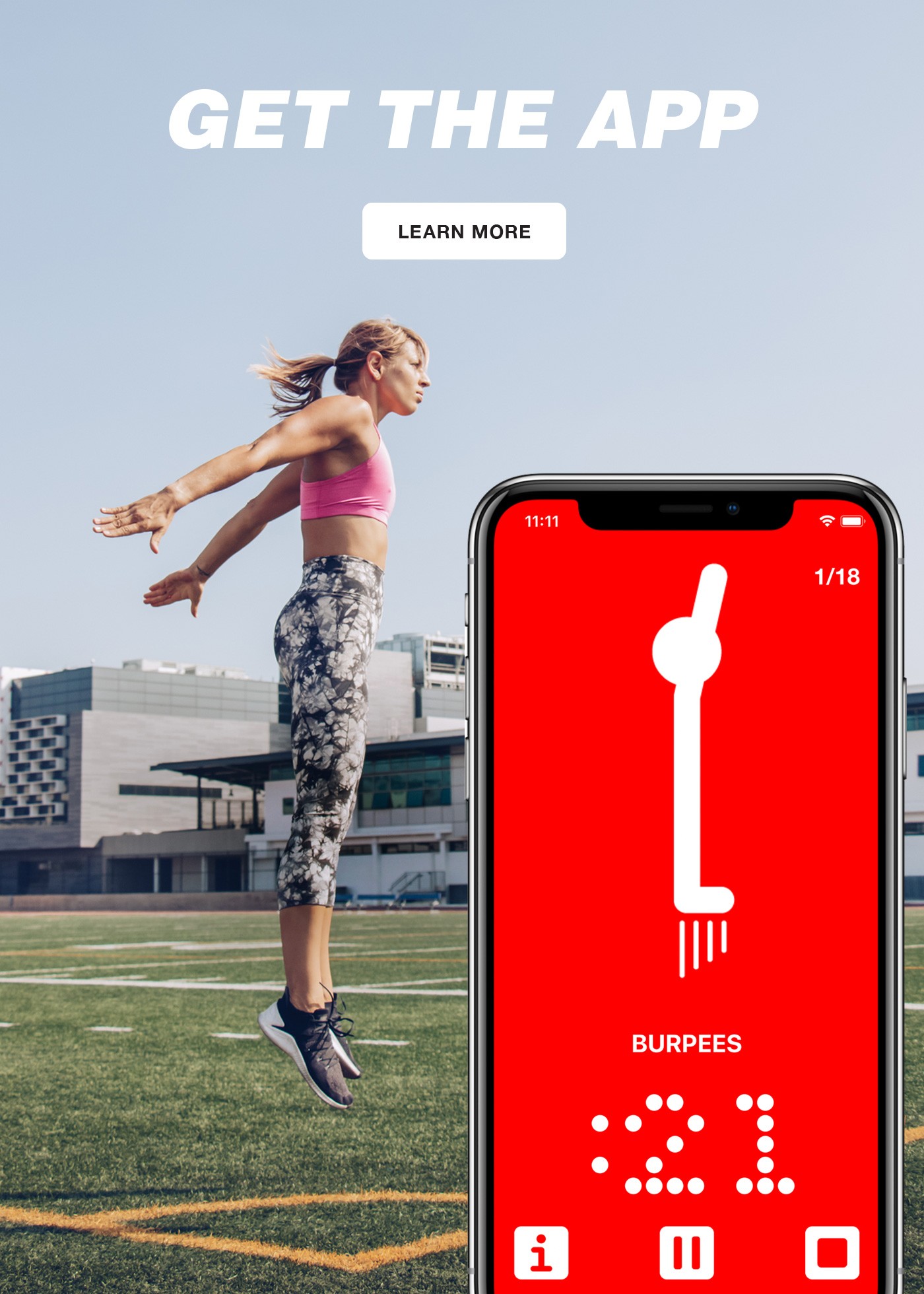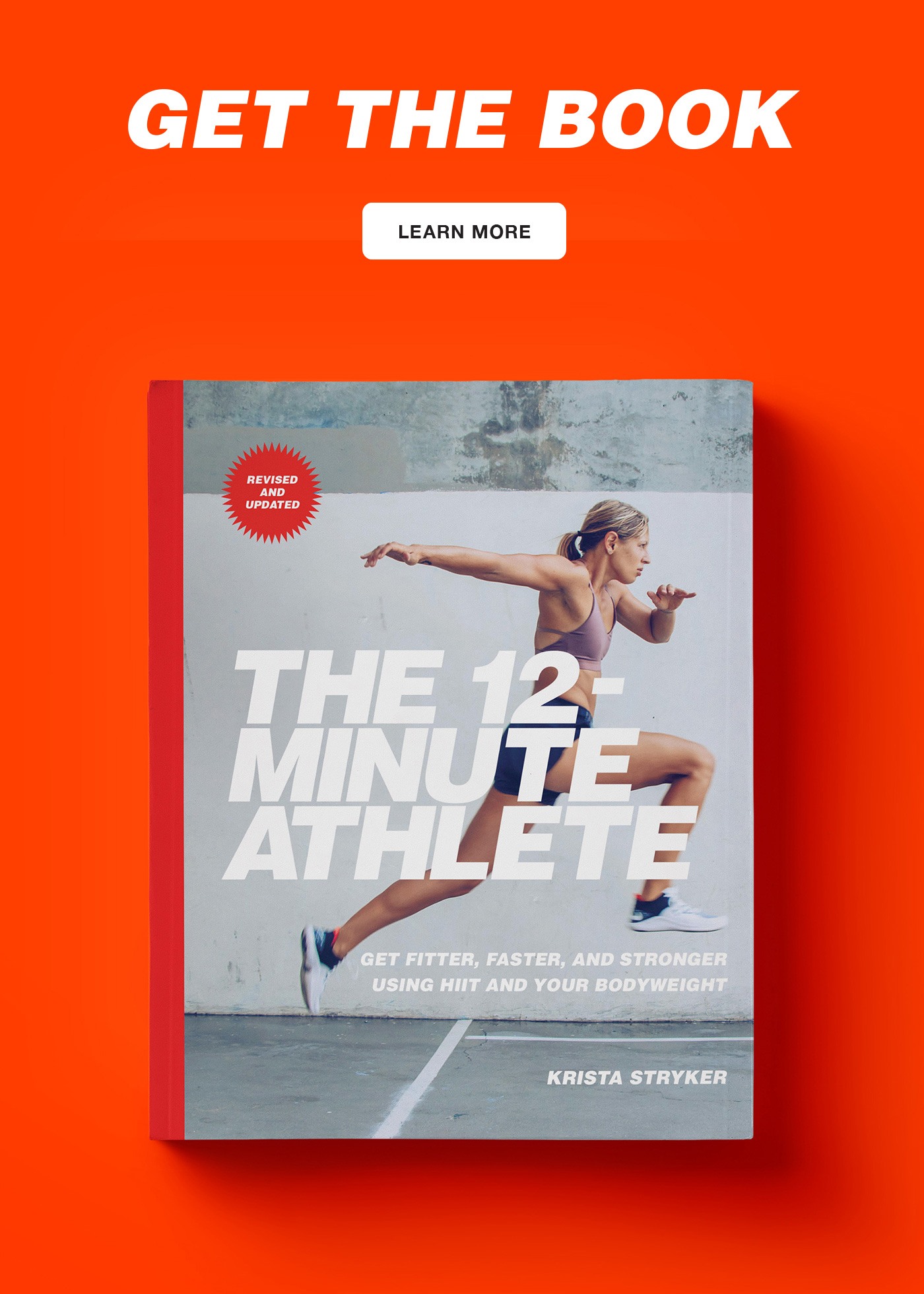For those of you with a lot of fitness goals, knowing how and when to work on skills on top of your regular HIIT training or other workouts can definitely be a challenge.
Because while it’s awesome to include exercises like pull ups, pistols, and handstand push ups into your regular HIIT, AMRAP, or time challenge workouts, if you really want to build up a new skill, you’re going to have to commit some extra time and focus in order to really master it.
For example, here are some of the skills I’m working on right now:
- Front and back walkovers
- Handstand presses
- Human flags
- Tumbling (front + back handsprings, front + back tucks, headsprings)
These days, I continue to keep my regular workouts short, yet I commit extra time several days a week to working on these and other skills solely because I find it fun and rewarding to go after new challenges.
So what’s the best way to work on new skills without adding too much more time to your workout schedule and putting yourself at risk for overtraining? Here are the tips that have helped me the most over my fitness journey:
Keep The Focus to Just a Few
Those of us who are extra ambitious may want to work on everything at once (speaking from experience here).
But if you really want to make progress quickly, you should try and focus on just a couple of skills at once. It depends on the amount of time you want to spend training those skills, but three to five at once is generally a good number. Much more than that and you’re not going to be able to spend enough time on each to make any noticeable progress.
In an ideal world, you’d also focus on skills that focus on different muscle groups to give your body proper time to recover. For example, a good skill breakdown might be:
By breaking it up into different muscle groups like this, you’ll be giving your body ample recovery time but still getting to work on multiple skills at once.
(Of course, it doesn’t always work this way, and that’s ok too!)
When To Train Skills
So when is the best time to work on skills? There are a couple of options, each with its own benefits and downsides:
After Your Workout
Working on skills after an intense HIIT workout is probably the easiest mentally because it allows you to feel like you got your workout over with and then you basically just get to play with some fun skill training.
Depending on the skill you’re focusing on, this can be a good option, but the problem with this method is that if you always do your skill training post-workout, you’ll probably be way too tired to put the proper focus and energy into your skill training.
Benefit: You can get your more intense workout over with first.
Downside: You may be too tired to put the proper effort into your skill training.
Before Your Workout
Working on your skills before your workout means you’ll have plenty of energy to work on the things that are toughest for you.
For example, I almost always recommend working on handstands before a HIIT workout because the balancing part of handstands gets much harder when you’re exhausted from your regular workout.
Even if you’re just doing a heavy leg day, you’ll be pretty surprised at how much harder handstands feel afterwards. They really are a full body exercise!
Benefit: You’ll have plenty of energy to work on your skills.
Downside: You still have an entire workout ahead of you, which can be mentally daunting for some people. You also might get hungry since you’re spending longer on training, so make sure to have a proper pre-workout meal and even eat a snack like a piece of fruit during your workout if you go this route.
At a Separate Time of Day
Working on your skills at a separate time of day from your regular workout can be a great option for some people because it allows you to keep each session relatively short but still have enough rest in between to allow your body to recover.
The biggest downside to this is probably the mental one, since most people don’t like the idea of working out twice a day. It can also add some extra time if you have to shower twice, commute to a gym or workout place, etc.
Benefit: You can keep your workouts short and have enough energy to crush each one.
Downside: It’s often tough mentally to do two workouts a day. It can also add some extra time since you have to get ready and/or commute to your workout spot twice in one day.
Break it Up Throughout the Day
Another option is to spend five minutes working on your chosen skill(s) at various times of the day.
For example, you can practice your handstands while your oatmeal is cooking, do some max pull up reps while you’re waiting for the laundry to finish up, etc.
The idea here is to practice your skills at times when you wouldn’t necessarily been doing anything else but waiting around. I will often do this because it doesn’t really take away any extra time out of my day, plus working on something for shorter stints means you won’t get as fatigued so you can practice more often.
Benefit: You’ll be rested each time you go to work on your skills. It also doesn’t take any extra time out of your day if you plan it right.
Downside: It can be hard to really focus on certain skills when you only have a couple of minutes to practice them and you might not make progress as quickly.
Just keep in mind that one way of training won’t work for everyone—ultimately, you’ll have to experiment with the timing on what works best for your personal energy levels and lifestyle.
On a Totally Separate Day
Both HIIT workouts and skill training are hard—but in a totally different way. HIIT workouts are really intense cardio-based workouts, and they can and should be exhausting. All those burpees, double unders and high knees are no joke!
On the other hand, skill workouts don’t tend to be that demanding in terms of cardio. Because of this, you may want to try and practice skills on days when you’re not doing a high intensity workout but still want to keep yourself moving and working towards your goals. You can even practice the skills on your active rest day and think about it more like play.
Benefit: If you need to take lighter days and recover from your high intensity workouts, practicing skills on a separate day may work well for you.
Downside: If you’re prone to overtraining, you may try and sneak in too many skill-focused days on days when you really should be taking a full day off.
How Much Time to Spend on Skill Training
Unlike HIIT workouts, skill training can be frustrating because it’s pretty inefficient to work on. When you want to master something like a freestanding handstand, muscle up, or front lever, you really have to go slow and controlled—you can’t rush it, or you’ll never reach your goals.
The problem with this is that not everyone has tons of extra time every day to train skills, which means you have to be pretty efficient about the whole process if you want to get any training in at all.
Here’s what I do to make sure I get in my skill training:
I pre-plan my workout. Before every workout I always make a plan of what I want to accomplish. That way I don’t end up wasting time on anything I wasn’t planning to work on, and I can stay focused on my goals easier.
I set a timer. Time working on skills can fly by, especially if you find it fun or rest a little too long between sets. Setting a timer can really help keep you on track.
How much time you spend in total is really up to you—there are some days when I only have 15 minutes for skill practice, and others when I might spend 45 minutes or so because I have more time to spare and I feel in the zone.
Stick With It
There’s no doubt that skill training can be discouraging at times because of the inevitable slow progress that goes along with it, especially when you start wanting to accomplish more advanced skills. I’ve spent years on handstands and am just getting to the point where I feel more confident with them.
Unlike with HIIT training, where you can see progress in a matter of weeks, skill progress is much slower. There will undoubtedly be times when you feel like you’ve hit a plateau, and even times when you feel like you’ve gone backwards.
But just like with any goal that’s important to you, the key is to try not to let yourself get too discouraged. These things take time, and if you want it bad enough, you just have to stick with it and you will get there with time and practice.
You’ve got this!



Thanks for the great tips Krista.